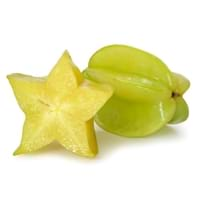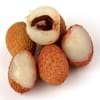Health Benefits
Arthritis treatment, Cancer prevention, Eczema treatment, Increases metabolic rate, Kidney stone treatment, Prevents constipation, Removes toxic metals, Treatment of alzheimer's disease
Cancer prevention, Heat stroke treatment
General Benefits
Anti oxidant properties, Anti-inflammatory properties, Controls blood pressure, Digestive aid, Strengthens bones, Treatment of sore eyes
Anti oxidant properties, Anti-inflammatory properties, Digestive aid, Maintains healthy cholesterol level, Treatment of sore eyes
Skin Benefits
Heals sunburn, Hydrates skin, Skin rejuvenation, Skin revitalization, Treatment of dark spots, Treatment of skin diseases
Anti-aging benefits, Heals sunburn, Skin rejuvenation
Hair Benefits
Promotes longer and healthier hair, Protects hair, Regulates hair growth, Shiny hair
Promotes longer and healthier hair, Protects hair
Allergy Symptoms
Breathing difficulty, Decrease in blood pressure, Diarrhea, Itching, Red rash, Runny nose, Sneezing, Vomiting, Watery eyes
NA
Side Effects
Stressed heart, Irritation, Swelling, Swelling around mouth, Throat swelling, Tongue swelling, Strained blood vessels
Nausea, Vomiting
Lactating Women
Not Available
Yes
Best Time to Eat
Along with meal, As a snack in the late afternoon, Eat the fresh ones, avoid mixing with any other foods, don't eat after meal., Strictly avoid empty stomach
As a snack in the late afternoon, Eat the fresh ones, avoid mixing with any other foods, don't eat after meal., Strictly avoid empty stomach
Vitamin B5 (Pantothenic Acid)
Vitamin C (Ascorbic Acid)
Vitamin K (Phyllochinone)
Phytosterol
Not Available
Calories in Fresh Fruit with Peel
Calories in Fresh Fruit without Peel
Not Available
Calories in Frozen Form
Not Available
Not Available
Calories in Dried Form
Not Available
Calories in Canned Form
Not Available
Not Available
Calories in Juice
Not Available
Type
Fruit vegetable, Melon
Tree fruit
Season
Spring, Summer
Autumn, Spring, Summer
Varieties
Armenian, English, Garden, Kirby, Lemon and Persian
King, Bell, Sri Kembangan, Arkin and Fwang Tung
Color
Dark green, Green
Golden yellow, Green
Inside Color
White
Yellowish Green
Shape
Cylindrical
Oval and Star(Cross section)
Taste
Juicy, Watery
Crisp, Juicy, Sweet
Grows on
Vines
Not Available
Soil Type
Loam
Loam, Well-drained
Climatic Conditions
Warm
Moist, Warm to hot climate
Facts about
- Outer waxy coating of cucumber can erase the pen writing.
- Pressing cucumber on roof of mouth for 30 sec will eliminate bad breath.
- It is made up of 96% water.
- English cucumber can grow longer than 2 feet.
- When carambola is cut horizontally, it forms a star.
- It is believed that carambola helps to cure hangover.
- Entire carambola is edible, including its skin.
- 2 varieties of carambola are cultivated: tart & sweet.
Top Producer
China
Taiwan
Other Countries
Egypt, Indonesia, Iran, Japan, Russia, Spain, Turkey, Ukraine, United States of America
Australia, Guyana, India, Israel, Malaysia, Philippines, United States of America
Top Importer
France
Europe
Top Exporter
Spain
Malaysia
Botanical Name
Cucumis sativus
Averrhoa carambola
Synonym
Not Available
Not Available
Subkingdom
Tracheobionta
Tracheobionta
Division
Magnoliophyta
Magnoliophyta
Class
Magnoliopsida
Magnoliopsida
Subclass
Dillenhidae
Rosidae
Order
Cucurbitales
Oxalidales
Family
Cucurbitaceae
Oxalidaceae
Species
C. sativus
A. carambola
Generic Group
Not Available
Not Available
Difference Between Cucumber and Carambola
We might think that Cucumber and Carambola are similar with respect to nutritional value and health benefits. But the nutrient content of both fruits is different. Cucumber and Carambola Facts such as their taste, shape, color, and size are also distinct. The difference between Cucumber and Carambola is explained here.
The amount of calories in 100 gm of fresh Cucumber and Carambola with peel is 15.00 kcal and 31.00 kcal and the amount of calories without peel is 12.00 kcal and Not Available respectively. Thus, Cucumber and Carambola belong to Low Calorie Fruits and Low Calorie Fruits category.These fruits might or might not differ with respect to their scientific classification. The order of Cucumber and Carambola is Cucurbitales and Oxalidales respectively. Cucumber belongs to Cucurbitaceae family and Carambola belongs to Oxalidaceae family. Cucumber belongs to Cucumis genus of C. sativus species and Carambola belongs to Averrhoa genus of A. carambola species. Beings plants, both fruits belong to Plantae Kingdom.









